Millions around the world are affected by migraines. This neurological disorder which presents with recurring headaches that last for hours or days at a time causes the victim to be overly sensitive to noise and light. The patient may also get other symptoms including nausea and vomiting. Although some drugs are used to manage it, migraine has no proven medication to eliminate it for good. There are also other ways to fight the excruciating pain. In this discussion, we will explore the use of yoga for migraines.
How Does Yoga Help with Migraines?
While many types of physical exercise may trigger migraines attacks, yoga does not involve aerobic exercises. It will therefore not strain the heart which would otherwise cause you to breathe hard. Yoga is recommended for people with less intense migraines.
Yoga works for migraines because it has a quieting effect on the nervous system. Additionally, the gentle stretching and breathing exercises help the body to relax.
Can Anyone Do Yoga?
It is inadvisable to do yoga if you have some medical conditions such as glaucoma, diseases of the spine, osteoporosis, low blood pressure and therefore at a high risk of blood clots. People with such conditions should therefore talk to a doctor before engaging in yoga. If your doctor allows you to train, let your yoga teacher know about the condition. This will help them to modify yoga postures so that you don’t end up with excessive strain or injury.
Once you start classes, also commit to doing the recommended yoga exercises at home for most benefit. The recommendation is to do yoga for migraines for 30 minutes per day for 5 times in a week. This is adequate for calming the nervous system and relieving migraine.
Best Yoga Poses for Migraines
Do the following yoga poses in the morning. In each case, hold the pose for up to a minute, while you concentrate on slow breathing and relaxation. Repeat the sequence two to four times.
1. Forward Virasana
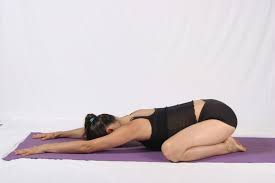
- With knees apart, kneel and draw your shoulders forward past your ears
- Lower your chest downwards and lengthen the tailbone back and forth.
- Gently tuck in the chin towards the chest, lengthening the back of the neck.
- You may rest the forehead on a pillow.
2. Downward Dog (Adho Mukha Svanasana)
.png)
- Bend forwards to form an inverted ‘V’ shape with your thighs and spine at an approximately 90° angle.
- Put your palm flat and firmly on the mat with fingers pointing forward and armpits rolled inwards.
- Keep the elbows straight and tuck the chin into the chest.
- Lengthen back of the neck so that you are looking towards your navel or thighs.
- While tucking in the tailbone, lengthen your spine including the lower back.
- Your heels should remain on the mat and you should not strain the neck or shoulders.
3. Wide Angle Standing Forward Bend (Prasarita Padottanasana)
.png)
- While keeping your feet wide apart, press your toes firmly into the mat on the mat.
- Work your feet as if to stretch the mat apart.
- With your tailbone tacked in, come down on the sitting bones and lengthen the lower back.
- Bring both hands to the ankles, bend the elbows and reach out with your arms and hold them together at the back of the head.
- Gently bring your head to touch the floor with chin tucked in towards your chest.
- You may choose to do this pose with your back against a wall.
4. Standing Forward Bend (Uttanasana)
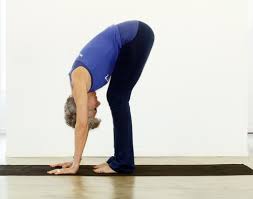
- Stand with your weight spread across both feet or slightly into the toes.
- Let the big toes touch.
- Tuck in the tailbone and bend your spine forward with the chin tucked in toward the chest.
- Lengthen back of the neck.
- Bring your palms to the floor so that fingertips are aligned with the heels.
5. Head to Knee Pose (Janusirsasana)
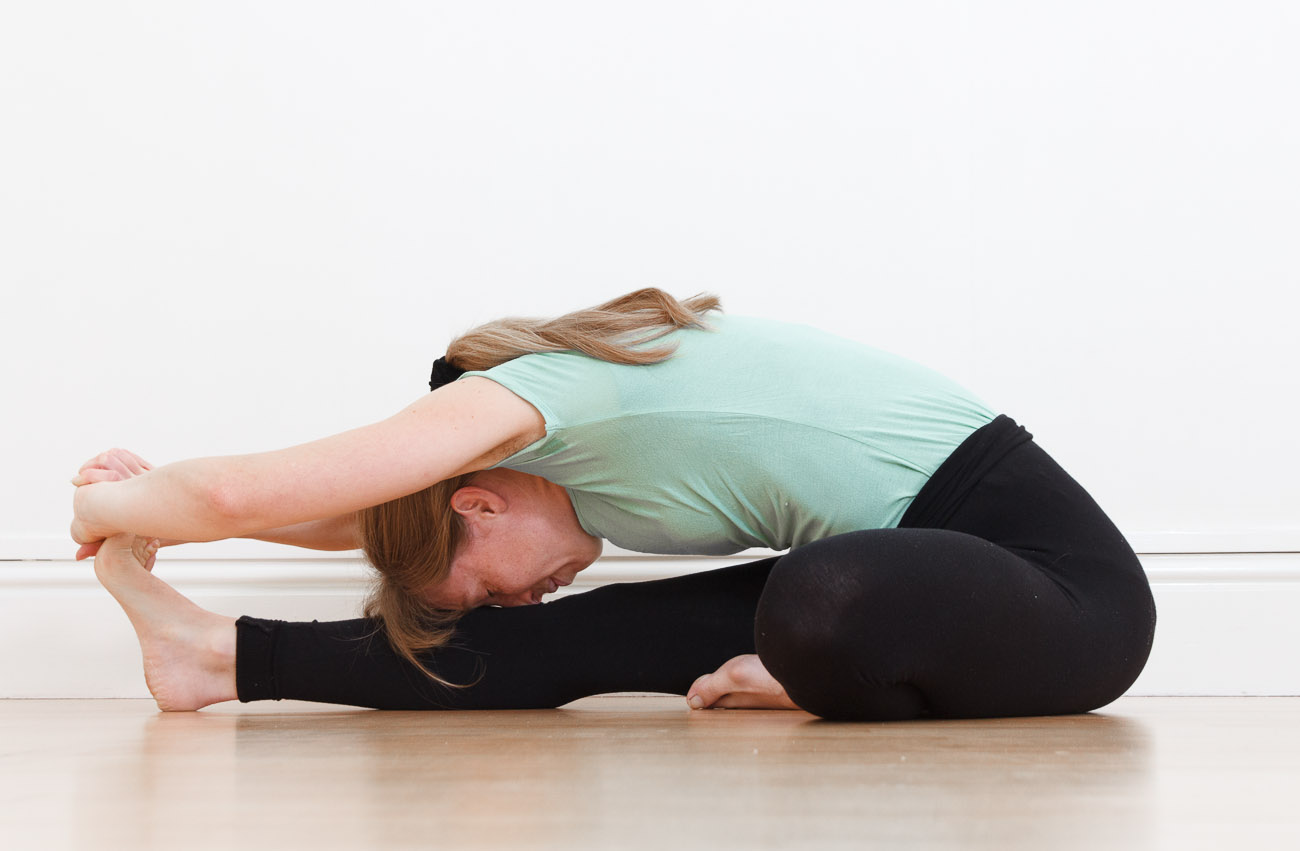
- For this yoga for migraines pose, sit with your legs straight ahead.
- Tuck the right heel into your groin with toes facing forward.
- Sit up with your spine straight.
- Inhale while raising the arms above the head.
- Exhale, while bringing your fingers down towards your left foot toes.
- Gently turn your belly towards your left side.
- Tuck in the chin towards your chest and lengthen your neck.
- Relax your jaws and eyes, then swap to the opposite side.
6. Seated Forward Bend (Pascimottanasana)
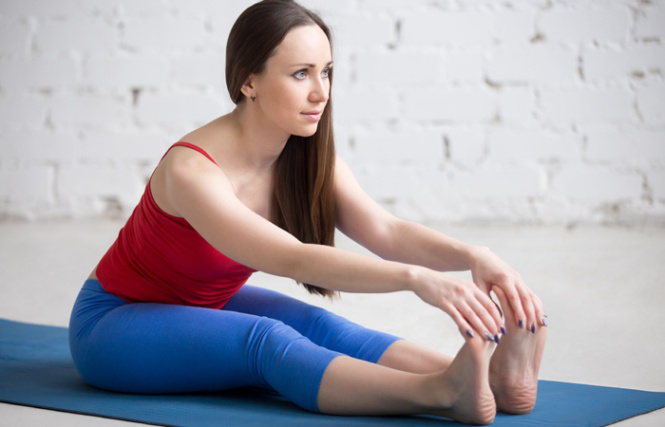
- Sit with your legs stretched out in front.
- Flex the toes back towards your torso with the big toes touching and heels slightly apart.
- Sit upright with and lift your spine upwards.
- Inhale as you lift your arms, then exhale as you bend forward to reach out your hands towards your toes or past them.
- With the chin against your chest, lengthen back of your neck and bring the shoulders forward past your ears and armpits towards your thighs.
- Relax your throat and let your breath flow.
7. Twist (Matsyendrasana)
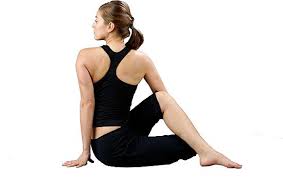
- To do this yoga for migraines pose, sit with your knees bent upwards.
- Bring your right leg under the left and turn your abdomen to your left side, followed by the chest and then the neck, the head and the eyes.
- You may also put your right elbow against the outer side of your left leg.
- Put your left hand on the mat behind the back and the left ear facing upwards and the chin tucked in slightly.
8. Upward Facing Dog Pose (Urdhva Mukha Svanasana)
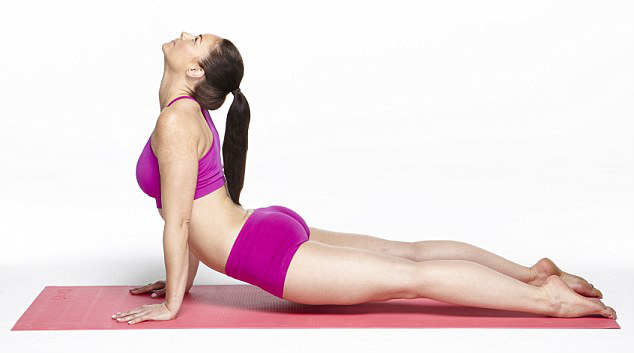
- Lie face down on the mat with your hands on the side of each hip, index finger pointing forwards.
- Press your shoulders down and straighten your arms.
- Palms pushing down against the floor, push your groin forwards towards the hands.
- Push your heel tops towards the floor, using your buttocks and thigh muscles.
- Holding your hands in position, roll biceps and shoulders outwards, keeping your abdomen firm and sides relaxed.
- Tilt your chin up and throat forward.
9. Bridge Pose (Setu Bandha)
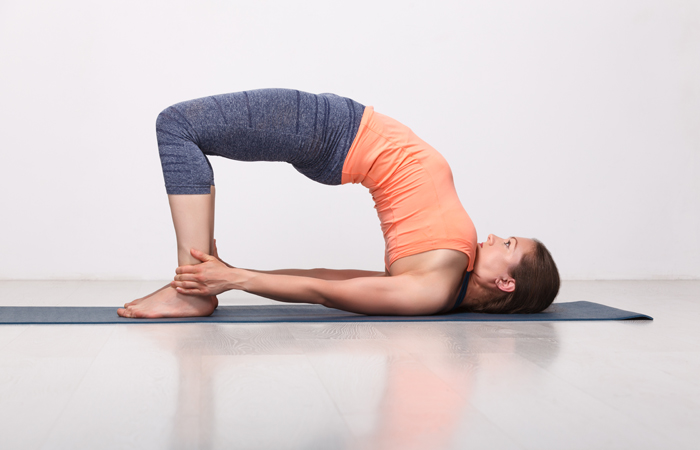
- Lie on the back and bend both knees with feet on the mat.
- Bring both heels to your but with feet not more than hip - width apart and toes turned in slightly.
- Stretch your arms so that fingers reach out towards the heels.
- Pressing your feet firmly into the mat, slowly lift your pelvis upwards.
- Tuck your tailbone in and your chin into the chest.
- Lengthen back of the neck, facing towards the tip of your nose.
- Gently stretch the lower back and the abdominal area while lengthening your spine.
- You may also interlace your fingers behind you, squeeze palms together, straighten elbows and wiggle shoulders and shoulder blades and open front of your chest.
- Do not allow knees and thighs to move apart beyond one fist width.
10. Corpse Pose (Savasana)
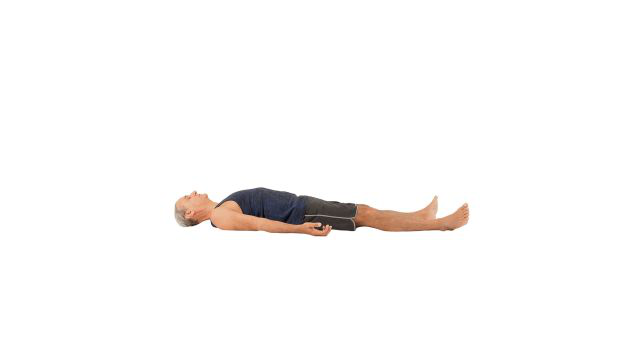
- Lie on the back, with your feet and legs together and arms about 30° to your sides and palms facing up.
- Keep your eyes closed as you concentrate on whole body relaxation in this yoga pose.
